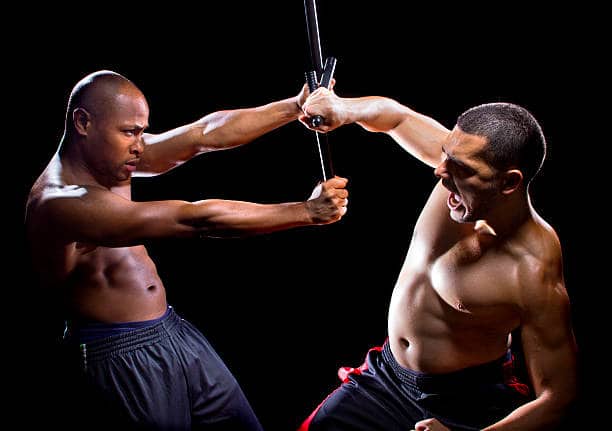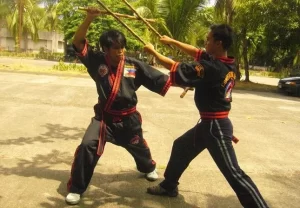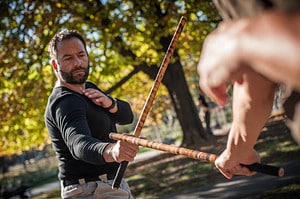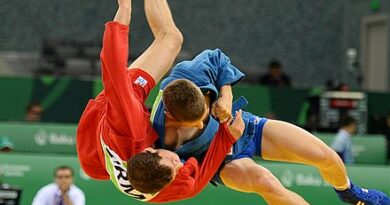What are some of the key principles and techniques used in Filipino martial arts, such as Arnis, Escrima, and Kali?
Table of Contents
Introduction
Filipino martial arts, also known as Arnis, Eskrima, and Kali, are a unique form of martial arts that originated in the Philippines. These martial arts are known for their use of weapons such as sticks, knives, and swords, as well as their emphasis on empty-hand techniques. Filipino martial arts are known for their effectiveness in both self-defense and combat situations, and have been used by the Filipino people for centuries. The martial arts are also known for their emphasis on flow and fluidity, as well as their use of angles and footwork. Filipino martial arts are an important part of Filipino culture, and are still practiced today by many people around the world.
The History and Evolution of Filipino Martial Arts
The earliest evidence of Filipino martial arts dates back to the 10th century, when the island of Luzon was ruled by the Hindu-Buddhist Kingdom of Tondo. During this period, the martial arts of the region were heavily influenced by Indian martial arts, such as Silambam and Kalaripayattu. These martial arts were practiced by the warriors of the kingdom, and were used to defend against invaders and to settle disputes.
In the 16th century, the Spanish colonized the Philippines and brought with them their own martial arts, such as fencing and saber fighting. These martial arts were combined with the existing Filipino martial arts to create a new style of combat. This new style was known as Arnis de Mano, and it was used by the Filipino people to defend themselves against the Spanish.
In the 19th century, the Filipino martial arts were further developed by the Filipino people. They began to incorporate the use of weapons such as sticks, knives, and swords into their martial arts. This new style of combat was known as Eskrima, and it was used by the Filipino people to defend themselves against the Spanish and other foreign invaders.
In the 20th century, the Filipino martial arts were further refined and developed. The use of weapons such as sticks, knives, and swords was further refined, and the use of empty-hand techniques was emphasized. This new style of combat was known as Kali, and it is still practiced today.
Today, Filipino martial arts are practiced all over the world. They are used for self-defense, competition, and even as a form of physical fitness. The history and evolution of Filipino martial arts has been shaped by the various cultures and influences that have been present in the Philippines throughout its history, and it continues to evolve and adapt to the changing times.
The Role of Filipino Martial Arts in Filipino Culture
The martial arts are also used to promote Filipino pride. The martial arts are seen as a way to honor the country’s history and culture. They are also seen as a way to promote Filipino values and traditions.
The martial arts are also used to promote physical fitness. The martial arts are used to develop strength, agility, and coordination. They are also used to promote healthy lifestyles and physical fitness.
The martial arts are also used to promote peace and harmony. The martial arts are used to teach respect for others and the importance of non-violence. They are also used to promote understanding and tolerance between different cultures.
The Different Styles of Filipino Martial Arts
There are several different styles of Filipino martial arts, each with its own unique techniques and strategies. The most popular styles are Modern Arnis, Doce Pares, and Balintawak.
Modern Arnis is a style of Filipino martial arts that was developed in the 1950s by Grandmaster Remy Presas. This style focuses on the use of sticks and knives, as well as empty-hand techniques. It is a highly effective and efficient style that emphasizes speed and agility.
Doce Pares is a style of Filipino martial arts that was developed in the 1920s by Grandmaster Ciriaco “Cacoy” Cañete. This style focuses on the use of sticks, knives, and swords, as well as empty-hand techniques. It is a highly effective and efficient style that emphasizes power and precision.
Balintawak is a style of Filipino martial arts that was developed in the 1950s by Grandmaster Venancio “Anciong” Bacon. This style focuses on the use of sticks and knives, as well as empty-hand techniques. It is a highly effective and efficient style that emphasizes speed and agility.
Each of these styles of Filipino martial arts has its own unique techniques and strategies. They are all highly effective and efficient styles that emphasize speed, power, and precision. Whether you are looking to learn self-defense or just want to learn a new martial art, Filipino martial arts are a great choice.
The Impact of Filipino Martial Arts on Modern Martial Arts
The Filipino martial arts are based on the concept of using weapons to defend oneself. This includes sticks, knives, and swords, as well as empty-hand techniques. The weapons-based approach to combat is unique in that it emphasizes the use of multiple weapons and the ability to transition quickly between them. This approach has been adopted by many modern martial arts, such as Krav Maga and Jeet Kune Do.
The Filipino martial arts also emphasize the use of angles and footwork to gain an advantage in combat. This is known as “angles of attack” and is a key component of many modern martial arts. The use of angles and footwork allows practitioners to move quickly and efficiently, while also allowing them to gain an advantage over their opponents.
The Filipino martial arts also emphasize the use of improvised weapons. This includes the use of everyday objects, such as sticks, umbrellas, and even chairs, as weapons.
Finally, the Filipino martial arts emphasize the use of pressure points and joint locks. This is known as “dirty fighting” and is a key component of many modern martial arts. The use of pressure points and joint locks allows practitioners to gain an advantage over their opponents without relying on brute strength.
The Benefits of Training in Filipino Martial Arts
Physically, training in Filipino martial arts can help to improve strength, flexibility, and coordination. The use of weapons in this style of martial arts requires practitioners to use their entire body to generate power and speed. This helps to build strength and coordination, as well as improve balance and agility. Additionally, the use of weapons can help to improve hand-eye coordination and reaction time.
Mentally, training in Filipino martial arts can help to improve focus and concentration. The use of weapons requires practitioners to be aware of their surroundings and to be able to react quickly to any changes. This helps to improve focus and concentration, as well as the ability to think quickly and make decisions in a split second. Additionally, the use of weapons can help to improve problem-solving skills, as practitioners must be able to think on their feet and come up with creative solutions to any given situation.
Finally, training in Filipino martial arts can help to improve self-confidence and self-discipline. The use of weapons requires practitioners to be aware of their own capabilities and limitations, and to be able to control their emotions in order to remain focused and in control. T
Conclusion
Filipino martial arts are an important part of Filipino culture and history. They are a unique form of martial arts that have been passed down through generations and are still practiced today. Filipino martial arts are a great way to stay fit, learn self-defense, and gain a deeper understanding of Filipino culture. They are a great way to stay connected to the Filipino heritage and to learn more about the Filipino people.






